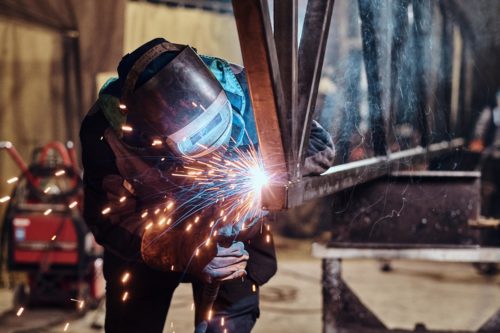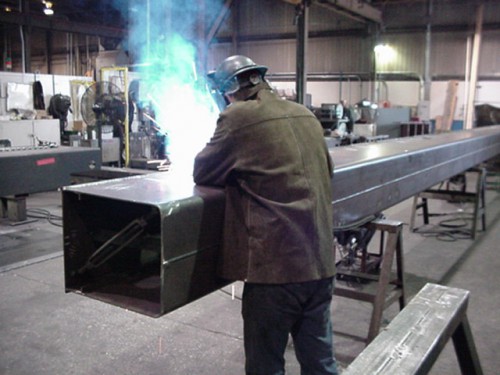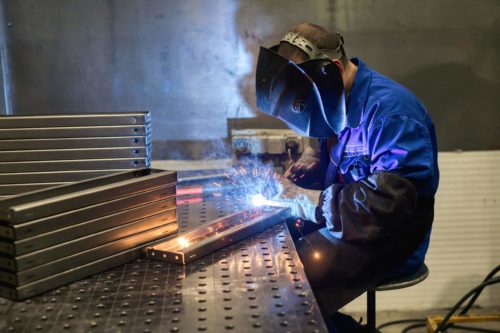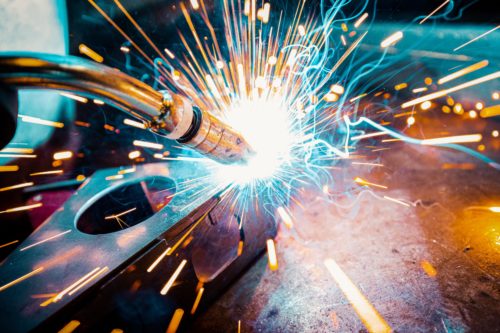Dissimilar metal welding processes join two different metal alloys through welding. There are many dissimilar metal welding applications and benefits. Fusing metals allows you to get more out of each metal’s unique properties. For example, while aluminum is light and corrosion-resistant, it is costlier than other metals, like steel.
Since metals have different properties, fusing the right dissimilar metals is essential to avoid corrosion or weak connections. That’s why evaluation of metals and filler material is critical before selecting the welding method. When done right, welding dissimilar metals can improve the overall performance of the metals and lower costs.
Dissimilar Welding Process

What makes welding dissimilar metals difficult is the variation in properties of different metals. There are several things to keep in mind when welding dissimilar metals, including:
Melting Points of the Metals
Many metals melt at different temperatures. For example, aluminum melts at around 1220 °F (660 °C), while steel melts at 2,500°F (1,370 °C). Welding quickly and using high heat can preserve the integrity of the finished weld. So, you may need to adjust your welding technique to ensure metals are melting and combining smoothly.
Coefficients of Thermal Expansion of Both Metals
The coefficient of thermal expansion indicates how the metal’s size changes when exposed to heat. If the coefficient between both metals varies greatly, it creates the risk of internal residual stress in the intermetallic zone after the fusion, impacting the lifespan of your newly welded metal.
Electrochemical Difference
Variation in electrochemical properties of metals can cause corrosion in the intermetallic zone. Corrosion levels are often directly proportional to the electrochemical difference. So, you are likely to experience more corrosion as the electrochemical difference increases between the two metals. Minimizing the intermetallic zone can reduce the risk of joint failure on the completed weld.
Solubility of Each
For the welding process to be successful, the two dissimilar metals must have the same solubility. Solubility is the ability of two metals to blend to form a solid solution. Using a third metal that is soluble with both original materials can solve the solubility problem.
Final Use of the Welded Component
Consider the final use when choosing the welding method for dissimilar materials. For example, welded joints that come in contact with electrolyte fluids need a filler material with a higher corrosion resistance than the metals to slow down the rate of galvanic corrosion.
Can Dissimilar Metals be Welded?

Benefits of Welding Dissimilar Metals
Welding dissimilar metals presents a range of benefits, including:
- Improved Joint Strength: It controls the phase formation in the joint by restricting the reacting time and the interlayer composition.
- More Combination Options: It is possible to make many combinations by welding dissimilar metals than conventional welding.
- Cost-Effective and Convenient: Welding dissimilar metals allows the opportunity to use cheaper materials, or what is available, and strengthen them by welding them to stronger metals.
Welding Techniques for Dissimilar Metals
Here are the top three welding techniques for dissimilar metals:
Fusion Welds: Fusion welding uses heat to fuse or join two or more materials by heating them to a melting point. The welding process can be categorized based on heat sources. These include high energy, electrical resistance, electric arc, and gas.
- Low-Dilution Welding: Low-dilution welding uses a pulse arc weld, electron beam, or laser welding dissimilar metals. The amount of base metal melted is small, and fillers are often unnecessary.
- Non-Fusion Joining of Dissimilar Materials: Non-fusion joint method involves diffusion welding, explosion welding, friction welding, and soldering and brazing. It works well when connecting aluminum and steel, stainless steel and nickel alloys, and steel and copper alloy pairs.
Work with G.E. Mathis Company
G.E. Mathis Company is one of the top providers of precision welding services. Our 135,000-square-foot facility in Chicago, IL can handle large weldments and still achieve the tightest tolerances available in the market today.
G.E. Mathis Company provides a range of precision welding services to meet the varying needs of customers. We also provide fully automated and CNC-controlled welding services for high-precision and large-scale projects and handle virtually any customer specification.
In addition to being an ISO 9001:2015-certified manufacturer, G.E. Mathis Company can provide the following services:
- PPAP (Production Part Approval Process) – All Levels
- FAIR (First Article Inspection Report)
- Capability Studies (Statistical Process Control)
- CMRT (Conflict Minerals Reporting Template)
Contact us today to learn more about our welding services, or request a quote to start your next project.







 Fusion Welds:
Fusion Welds: 






